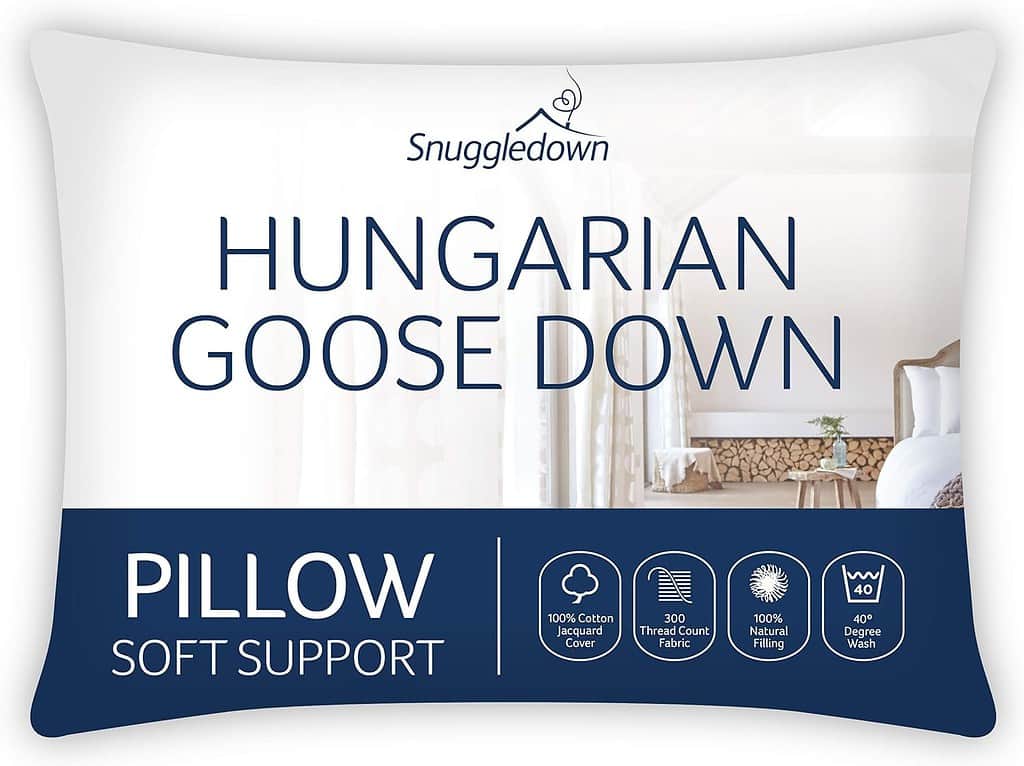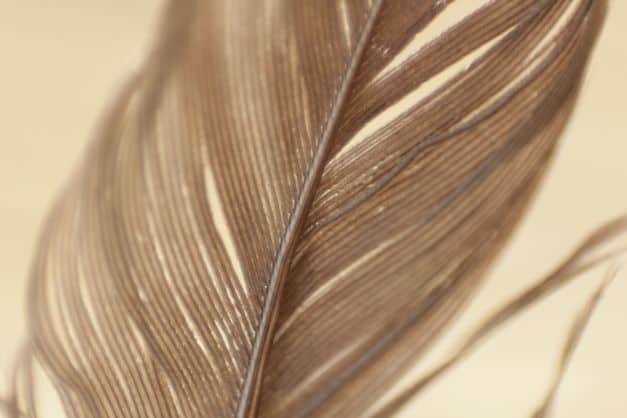Where do pillow feathers come from?
Feather pillows are a by-product of the food industry.
Most pillow feathers come from ducks and geese
Most feathers used in pillows and comforters come from ducks and geese, with a small percentage from chickens or turkeys. These birds are farmed for their meat, so the feathers are collected after slaughter before the animal is plucked for its skin. The down, or soft feathers closest to the duck or goose’s skin, are most often used in pillows because they provide the highest insulation and comfort.
Feathers and down are often used to fill pillows. The down, or soft feathers closest to the duck or goose’s skin, are most often used in pillows because they provide the highest insulation and comfort. A pillow filled with 100 per cent down is light, fluffy, and will compress easily. The feathers will not compress as much as the down, providing a firmer feel that may appeal to some sleepers. As a result, you can use both down and feathers in the same pillow for maximum support and breathability.
Feathers are a by-product of the meat industry, so most ducks and geese are raised for their meat, eggs, and feathers. Pillow makers purchase these feathers from duck and goose farms, where the birds are grown specifically for their feathers. Pillow makers purchase these feathers from duck and goose farms, where the birds are raised specifically for their feathers. The farms where these downy birds are raised are usually family-owned and operated. Many of these farms feature large open-air barns to house their flocks.
Once the feathers are harvested, they are cleaned, sorted, and graded before being used in pillows.
Once the feathers are harvested, they are cleaned, sorted and graded before being used in pillows. First, the feathers go into a large machine called a plucker (because it plucks off the feather barbs). The barbs are washed in hot water to remove dirt or other contaminants. Next, they’re dried. Then, they get sorted by softness and colour using air suction. Finally, they get sorted by length so that only full-length feathers make it into your pillow.

Many pillow manufacturers use a mix of feathers and down in their pillows to provide comfort and support.
Feathers are the firmer, more supportive layer, and soft down provides comfort. Many pillow manufacturers mix both: you get the best of both worlds. This brings us to another factoid: Down is an excellent insulator. It traps warm air close to your body and keeps you cosy all night long (this explains why kids love to burrow under their parents for some extra warmth).
Feathers are an environmentally friendly pillow-filling
Feathers are suitable for your pillow filling if you care about the environment. That’s because they’re a sustainable and renewable resource. That means the feathers in your pillow today won’t be taken from the wild and can be replaced without damaging delicate ecosystems. Those who care about animal welfare can rest easier knowing that feathers used in pillows come from ducks and geese raised on farms specifically for their feathers. The farming practices used to grow these birds have been scrutinised recently, but many family-owned farms take good care of their animals.
Down and feathers are biodegradable and recyclable
Feathers used in pillows and other bedding products are a biodegradable and renewable resource. This means they are a natural material that is good for the planet and healthy for you. It’s important to note that down and feathers will continue to provide comfort and support long after synthetic fibres have broken down. Because of their durability and non-allergenic nature, down pillows can be enjoyed for many years before being recycled or composted if they are no longer helpful.
Pillows with natural fillings like down and feathers can last many years if properly cared for.
Proper care is the key to longevity. To keep your pillows feeling new, they must be washed every two to three years, depending on use. Cleaning them regularly helps prevent mildew and keeps them smelling fresh. After washing, fluffing and shaping the pillow before drying will help it last longer, as well as alternating sleeping sides to avoid creases and flat spots. Also, please don’t put your pillow in direct sunlight or dry it with high heat, as this can damage natural fill fibres.
Feather pillows are hypoallergenic, making them a good choice for people with allergies.
Feather pillows are hypoallergenic, making them a good choice for people with allergies. This is because they are less likely to hold dust, dander, and other allergens than synthetic materials. If you suffer from allergies and want to try out a feather pillow, select one with 100% down feathers (rather than one that mixes down feathers with chicken feathers). The former is more expensive but also much fluffier.
To keep your pillow clean and allergy-free, keep your room air out at all times; shake your pillow free of dust each morning; consider investing in a feather pillow cover to further protect against potential allergens; and wash your pillows every three months on a gentle cycle in warm water with no bleach or fabric softener.
Pillows filled with feathers are often less expensive than those filled with synthetic materials.
You may have noticed that pillows filled with feathers are often less expensive than those filled with synthetic materials. This is because synthetic materials are artificial and more costly than natural materials like feathers. In addition, many companies manufacture pillows filled with feathers plucked from geese or ducks rather than making the stuffing themselves.
Feather pillows can be washed
If you’re thinking about washing a down pillow at home, remember that the feathers inside must be thoroughly dried, or the moisture can result in mildew. Here’s how to do it:
- Use a commercial laundry (if you have access). It will be able to ensure that the pillow is completely dried.
- Wash as above, but use a front-loading washing machine if possible. These often come with unique cycles for washing down pillows and comforters.
- Drying instructions are essential. The best way to dry down pillows is by using a dryer on its lowest setting. If this doesn’t work for you because it will take too long, another option would be to hang your pillow outside in the sun until completely dry (this could take all day).
Feather pillows are fantastic regardless of what position you sleep in
Feather pillows are great for all sleeping positions, but they’re perfect for back sleepers (although they can also be firm enough to support side sleepers). Feathers conform to your head and neck, providing the ideal support. Feather pillows are also lightweight and warm.
Final Thoughts
Feathers are a great choice if you’re looking for a natural option for your pillow. Feathers have been used in pillows for centuries, and a good reason. They’re durable, comfortable, and hypoallergenic. Just be sure to follow the proper care instructions to keep them clean and fresh. Feathers are a great choice if you’re looking for a natural option for your pillow. Feathers are an excellent option for pillows because they’re lightweight, warm, and comfortable. If you’ve never slept on a feather pillow before, you might be surprised by how different it feels from a synthetic pillow. Feather pillows feel softer and more luxuriant and conform to your head and neck better than synthetic materials.



